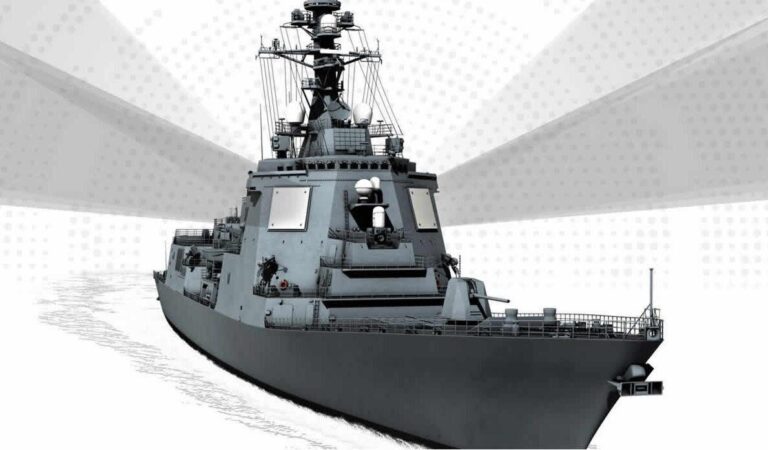Lockheed Martin has officially delivered the first SPY-7 radar antennas to Japan, marking a significant milestone in the enhancement of the country’s missile defense capabilities. The advanced radar systems, developed as part of the Aegis Ashore missile defense program, are set to strengthen Japan’s ability to detect and track potential threats in the region. This delivery underscores ongoing international collaboration in defense technology amid rising security challenges in the Indo-Pacific.
Lockheed delivers first SPY 7 radar antennas to Japan enhancing regional defense capabilities
Marking a significant milestone in Japan’s defense modernization, Lockheed Martin has successfully delivered the initial batch of SPY-7 radar antennas. These advanced radar systems are poised to revolutionize the country’s early-warning and missile tracking capabilities. Incorporating cutting-edge technology, the SPY-7 antennas enhance detection range and resolution, offering critical advantages against evolving aerial threats in the Indo-Pacific region. Their deployment reinforces Japan’s commitment to strengthening joint defense efforts with allied forces and maintaining regional security balance.
Key features of the SPY-7 radar system include:
- Active Electronically Scanned Array (AESA) technology for rapid target acquisition
- Enhanced multi-mission functionality supporting air and missile defense
- Robust electronic counter-countermeasures ensuring resilience in contested environments
- Modular design facilitating future upgrades and interoperability
| Specification | SPY-7 Radar |
|---|---|
| Detection Range | >500 km |
| Frequency Band | S-band |
| Operators | Japan, Canada (future) |
| Deployment | Land-based & Naval |
Advanced features of the SPY 7 radar and their strategic implications for Japan’s naval forces
The SPY-7 radar, equipped with state-of-the-art active electronically scanned array (AESA) technology, represents a significant leap in Japan’s maritime defense capabilities. Its modular and scalable design allows for enhanced multi-mission flexibility, enabling Japanese naval forces to detect and track a wide spectrum of threats-from ballistic missiles to low-observable stealth aircraft-with unprecedented accuracy and speed. Furthermore, the radar’s superior resistance to electronic countermeasures ensures a reliable operational picture in contested environments, a critical factor amid increasing geopolitical tensions in the Indo-Pacific region.
Strategically, the integration of the SPY-7 dramatically improves Japan’s layered defense architecture by facilitating real-time data sharing and coordinated engagement with allied systems. Key features such as:
- 360-degree coverage through distributed radar arrays
- High-resolution target discrimination integrating multi-spectral tracking
- Adaptive beamforming for clutter reduction in complex littoral zones
Position Japan not only to counter emerging missile threats but also to extend its maritime domain awareness. Below is a simplified comparative overview of the radar’s capabilities vis-Ã -vis its predecessors:
| Feature | Legacy Radar | SPY-7 Radar |
|---|---|---|
| Detection Range | 150 km | 250+ km |
| Target Tracking | Simultaneous 50 targets | Simultaneous 200+ targets |
| Electronic Counter-Countermeasures | Basic | Advanced AESA with adaptive jamming resistance |
| Integration | Limited network connectivity | Seamless multi-platform sharing |
Recommendations for leveraging SPY 7 integration to strengthen Japan US defense collaboration
To maximize the strategic impact of the SPY-7 radar antenna integration, bilateral defense establishments should prioritize interoperability-focused training programs that align operational protocols between Japan and the United States. Enhanced simulation exercises incorporating SPY-7 data streams can streamline joint response mechanisms, fostering real-time threat detection consistency across allied command centers. Additionally, sharing maintenance best practices through collaborative workshops will ensure the longevity and optimal performance of these cutting-edge radar systems, paving the way for sustained technological synergy.
Investment in a joint R&D framework could accelerate the evolution of radar capabilities by integrating advancements from both nations. Establishing a bi-national advisory council to oversee SPY-7 deployment will facilitate transparent communication and swift resolution of integration challenges. Below is a simplified roadmap illustrating key areas for cooperation:
| Focus Area | Action Item | Expected Outcome |
|---|---|---|
| Training | Joint simulation exercises | Unified threat response |
| Maintenance | Collaborative workshops | Enhanced system reliability |
| Research & Development | Bi-national technology sharing | Accelerated innovation cycles |
| Governance | Joint advisory council | Streamlined decision-making |
- Standardize data integration protocols for seamless sensor fusion.
- Leverage combined intelligence networks to enhance situational awareness.
- Foster regular cross-cultural defense dialogues to improve strategic alignment.
In Summary
The delivery of the first SPY-7 radar antennas to Japan marks a significant milestone in the ongoing partnership between Lockheed Martin and the Japanese defense sector. As Japan seeks to enhance its maritime surveillance and missile defense capabilities, the integration of these advanced radar systems underscores a strategic commitment to regional security and technological collaboration. With further deployments scheduled, the SPY-7 is poised to play a pivotal role in strengthening Japan’s defense infrastructure in the years ahead.




